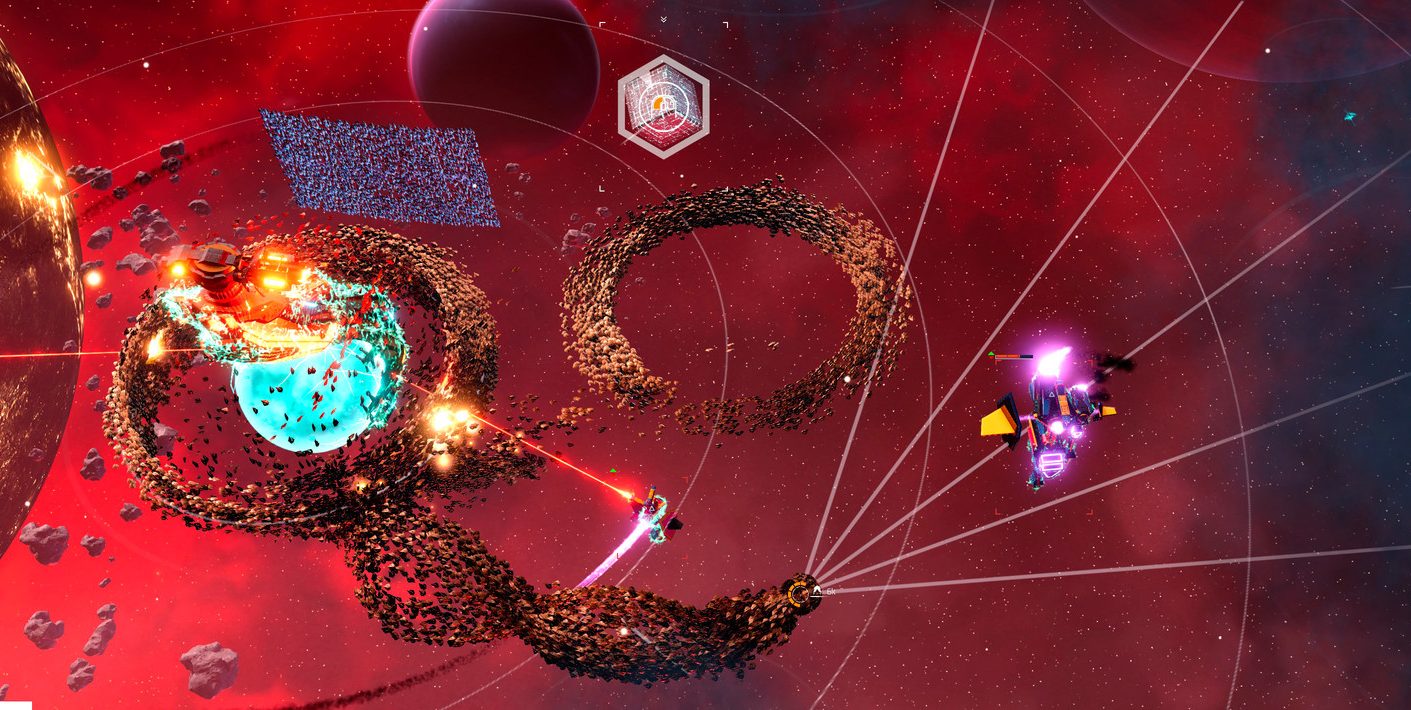Drone Swarm Review
The Real-Time Strategy genre is in an odd place these days, with major titles having moved mainly towards the competitive, with Moba elements creeping in. Indie titles are covering other niches, eschewing the standard base building and troop command of the genre, twisting familiar ideas into new and exciting concepts in Infested Planet, Creeper World and They Are Billions.
Drone Swarm is another of these unique spins on the strategy genre, as you command the Argo, a ship that houses 32,000 psionics, each in charge of a single drone. The psionics work together to control the Drone Swarm, which translates into gameplay as you tapping hotkeys and drawing lines to issue commands to your swarm. Select the attack formation, and your drones surge forward in a line of destruction, tearing through enemy ships. The Shield option creates defensive walls, and the kinetic option allows you to bundle your drones together and fire them out like shotgun blast – the ensuing force being strong enough to shove enemy ships into each other.
Don’t get hit

Conceptually, it gives you a handful of tools to juggle in interesting ways. Protecting your vulnerable ship as you pinball enemies into each other, and predict their flight paths as you trace lines of destruction around the maps. Visually, it’s a treat as your complement of drones swarm around your ship before lashing out at enemy ships, cascading off shields, catching the light of the stars around you like thousands of glittering jewels.
In a practical gameplay sense, however, it reveals major issues. Controlling the number of drones you want to send out relies on you drawing accurate line lengths with your offensive and defensive formations, or holding the button long enough for the kinetic blast. Sadly, the perspective of the map means that careful and well-planned gestures can skim over or under an enemy ship by pixels, dealing no damage.
The forces that you fight also cause problems, as they tend to favour high damage beams that can tear through your dormant swarm with impunity, and damage racks up faster than you can often react to. Strategic shields make little sense when the enemy ships orbit you faster than your swarm can react to – you can dismiss and rebuild shields, but multiple orbiting enemies make that a poor decision.
Rock bottom

In certain missions, the game spawns in asteroids that you need to deal with, but their random nature and buggy spawning means they can be inside your ship within seconds, halving your hit points with no time to react. Juggling between the different tools in your arsenal is where the strategic element of the game comes into play, but in practice, you’re often left drawing lines that do nothing through bugs or enemy ships moving erratically.
Enemy forces come in a wide variety, from the aforementioned beam users, to front shielded battleships, suicide ships and units that buff their allies. Later, two EMP ships appear that can lay mines or do an AoE burst that disables swathes of your swarm, and later still ships that can fire explosive bursts that destroy your drones come into play. Both of these reveal the core flaw of the game: 32000 drones simply isn’t a lot, when most formations take between 5-10,000 drones to do anything meaningful, and objectives that make your drones stay in one place mean you can find yourself at half strength in seconds.
Health regen for enemies high enough that small sustained assaults are not as beneficial as large attacks. Enemies that disable your swarm – or even worse, destroy it – seriously hamper your ability to deal with further challenges. Enemies often appear in waves, but with no indication of how many waves there are, or what you might fight next, losing half your swarm without warning makes for a miserable time. The fact that enemy ships are difficult to identify at a glance, and combat is so hectic that strategy is harder to justify than just spamming attack lines means that missions often become roulettes of brute force.
You can always be better

There are some upgrades that sound like they might help things, such as AoE effects around the ship, an automatic heal, and the ability to improve your powers by drawing circuits with them, but ultimately the game is so frenetic and unpredictable that it’s hard to notice the benefit of these. One appealing feature, the ability to change your swarm mid formation from kinetic to attack to shield, appears to have no real benefit in missions.
There’s also a story, told through pleasantly illustrated cutscenes and the mission chatter, which is about the crew of the Argo trying to find a planet that can rehome the population of an apocalyptic earth on, but it isn’t particularly engaging and takes a while to go anywhere interesting.
It’s a shame that the combat is so messy, and that bugs and poor mission balance and visual communication obfuscate your ability to interact with a core mechanic that feels fairly novel. The inspired visuals of drones crashing around like droplets of water in a roiling ocean are at least fun for a while, but there’s little here to hold your interest in the long term.
[Reviewed on PC]

